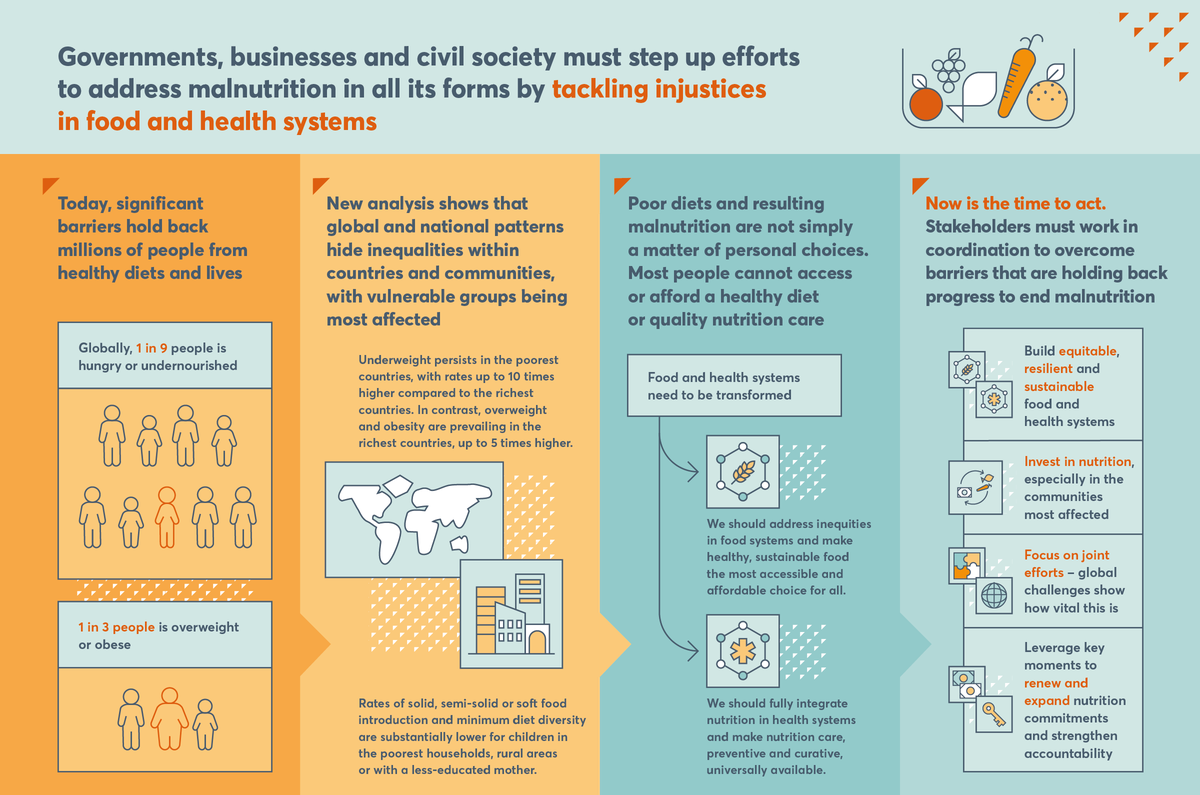Social Justice
Global Nutrition Report, 2021
- 25 Nov 2021
- 5 min read
Why in News
According to the recently released Global Nutrition Report (GNR, 2021), India has made no progress on anaemia and childhood wasting.
Global Nutrition Targets
- In 2012, the World Health Assembly (the decision-making body of the World Health Organisation) identified six nutrition targets to be met by 2025. These are:
- Reduce stunting by 40% in children under 5.
- Reduce the prevalence of anaemia by 50% among women in the age group of 19-49 years.
- Ensure 30% reduction in low-birth weight.
- Ensure no increase in childhood overweight.
- Increase the rate of exclusive breasfeeding in the first six months up to at least 50%
- Reduce and maintain childhood wasting to less than 5%.
Key Points
- Major Findings:
- Global Nutrition Targets:
- At the current rate of progress, the global nutrition targets will not be achieved by 2025 globally and in most countries worldwide.
- Variation in Data Availability:
- There is substantial variation in data availability and progress towards the global nutrition targets across 194 countries.
- Only seven countries are on track to meet four of the six maternal, infant and young child nutrition targets by 2025, while no country is ‘on track’ to halt the rise in adult obesity or achieve a 30% relative reduction in salt/sodium intake.
- There is substantial variation in data availability and progress towards the global nutrition targets across 194 countries.
- Impact of Covid-19:
- The Covid-19 pandemic is impeding progress towards achieving the global nutrition targets.
- An estimated additional 155 million people have been pushed into extreme poverty globally, while people with diet-related chronic diseases experience worse Covid-19 outcomes.
- The Covid-19 pandemic is impeding progress towards achieving the global nutrition targets.
- Little Progress in Improving Diets:
- The previous decade has seen little progress in improving diets, and a quarter of all deaths among adults are attributable to poor diets.
- Greenhouse Gas Emissions Globally:
- Food production currently generates more than a third of all greenhouse gas emissions globally, and uses substantial and rising amounts of environmental resources.
- Sustainable Development Goals:
- No region is on track to meet the Sustainable Development Goals aimed at limiting health and environmental burdens related to diets and the food system.
- Global Nutrition Targets:
- India Specific Data:
- Anaemic Indian Women:
- Over half of Indian women in the age group 15-49 years are anaemic.
- There has been a rise in anaemic Indian women since 2016 from 52.6% to 53% in 2020.
- Childhood Wasting:
- Over 17% of Indian children under 5 years of age are affected.
- India is also among 23 countries that have made no progress or are worsening on reducing ‘childhood wasting’.
- Wasting refers to children whose weight is low-for-their height.
- Child Stunting:
- Over 34% of children under 5 years of age are still affected.
- India is among 53 countries ‘on course’ to meet the target for stunting.
- Stunting is defined as low height-for-age.
- Childhood Overweight:
- The country is among 105 countries that are ‘on course’ to meet the target for ‘childhood overweight’.
- India Meeting Targets:
- India is meeting 7 of the 13 global nutrition targets which include sodium intake, raised blood pressure (both men and women), obesity (both men and women) and diabetes (both men and women).
- Anaemic Indian Women:
- Suggestions:
- Increase Finance:
- There needs to be a step-change in efforts and financial investments to end poor diets and malnutrition.
- Holistic Approach:
- Poor diets and malnutrition should be addressed holistically and sustainably to create a healthy future for all.
- Accountability and Monitoring:
- Better data, greater accountability and systematic monitoring are key to identify the progress needed.
- Increase Finance:
Global Nutrition Report
- It was conceived following the first Nutrition for Growth Initiative Summit (N4G) in 2013.
- The first report was published in 2014.
- It acts as a report card on the world’s nutrition—globally, regionally, and country by country—and on efforts to improve it.
- It is a multi-stakeholder initiative, consisting of a Stakeholder Group, Independent Expert Group and Report Secretariat.







